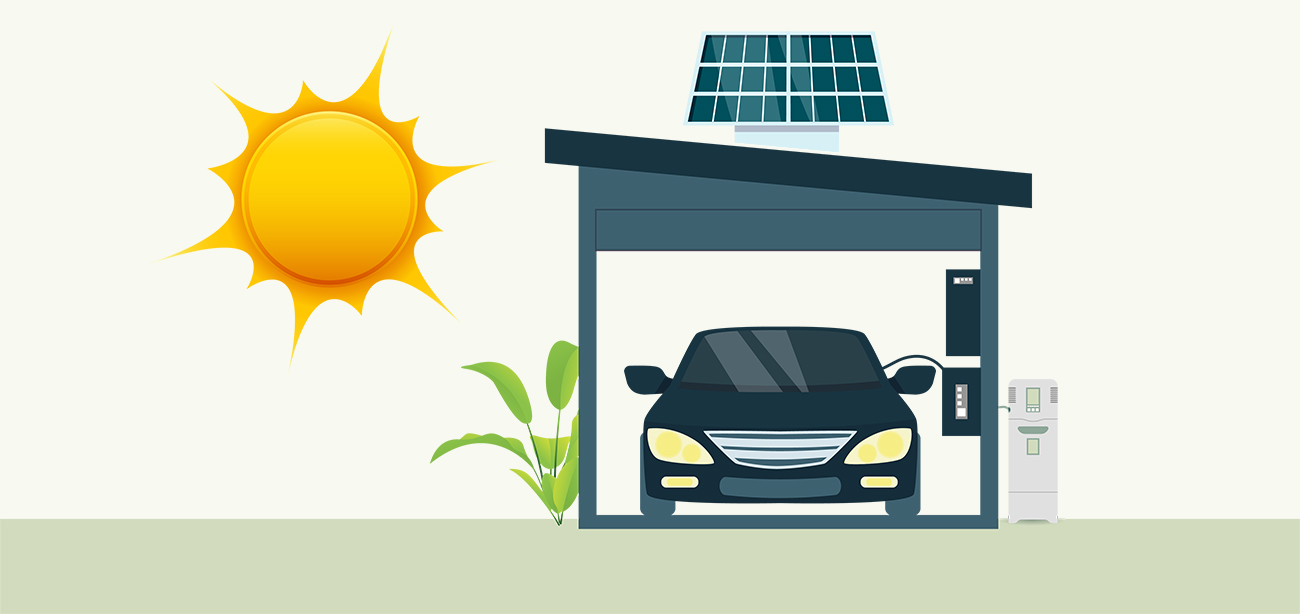Renewable Energy Generation and Storage

 Solar PV
Solar PV Solar photovoltaic (PV) systems
Solar PV systems generate energy from the sun. The first step when deciding on solar is to get quote for as much solar PV as can logically fit on your roof, north, west, and east of unshaded areas. Bigger is definitely better when it comes to solar PV!
 Green Providers
Green Providers Green electricity providers
If you are unable to install Solar PV at the moment, you can choose a green electricity provider and still support and benefit from renewable energy generation.
 Home Batteries
Home Batteries Home batteries
Once you have a solar PV system, you may consider a home battery to store any unused electricity. However, unfortunately home batteries are far from being economical, and the price of batteries is actually increasing. There are some government subsidies available if you'd still like to explore the option of a battery.
 EV
EV Electric vehicles (EV)
Given the right charger, your EV can effectively act like a home battery. If you are home during the day, you can charge your EV using solar electricity and then power your house from your car in the evening!
 Alternative energy storage
Alternative energy storage Alternative energy storage options
Aside from home batteries and electric vehicles, there are some other ways to store excess solar PV energy, including a hot water system with a storage tank, heat banks for space heating, and thermal mass.
![]() Click on each icon in the image above to get instant tips
Click on each icon in the image above to get instant tips
Solar photovoltaic (PV) systems
Solar photovoltaic (PV) systems generate electricity from sunlight. Solar PV cells that capture sunlight are placed in panels, which are in turn placed in arrays, to deliver solar power to homes and businesses. Solar systems can be stand alone or connected to the grid or a battery. If your solar PV is connected to the grid you will receive a feed in tariff from your electricity provider for any excess solar you put back into the grid.
Backup power will be needed for when your solar PV system does not cover your electricity usage (e.g. at night, during cloudy periods or when you are using your aircon, heat pump and charging your car at the same time!). This power can be provided by the main electricity grid, batteries or a generator. According to Australian government website Your Home, the payback period for solar PV systems is generally between 4 and 8 years for most Australian homes (depending on a household’s particular circumstances, such as electricity consumption or rebates).
How much solar PV do I need?
The first step when deciding on solar is to get a quick free quote for as much solar PV as can logically fit on your roof, north, west, and east of unshaded areas. It’s unlikely that you will regret installing as big a system as your roof can handle. Our electricity consumption is likely to increase in the future as electric cars become the norm and we move away from gas for heating, cooking and hot water systems. Remember not every day is bright and sunny, so your system will often produce less than its full capacity. Bigger is definitely better when it comes to solar PV!
There are various solar calculators available, such as the solar and battery storage sizing and payback calculator from Solar Choice. It can be difficult and expensive to add solar panels to an existing system later so it’s better to oversize your system. Additionally, the rebates are unlikely to be increased over time, and you can enjoy the benefits of solar PV now.
Solar PV Positioning
When choosing your system, ensure that it:
- is from a recognised manufacturer
- has good warranty coverage
- is on the list of Clean Energy Council approved modules, and
- is installed by an accredited installer with proven experience.
Home Batteries
Once you have a solar PV system, you may notice that the feed in tariff for electricity fed back to the grid is pretty low, or your electricity distributor may limit how much you can export. When this happens, you may consider a home battery to store that electricity for your own use instead. However, unfortunately home batteries are far from being economical.
One reason for this is that batteries will actually destroy or downgrade around 10% of the electricity you put into them, so they are not 100% efficient. Also, if you were hoping for the price of batteries to go down over time, we have bad news for you. The demand for lithium is going through the roof, which is mainly driven by electric car manufacturers. This in turn is actually driving the price of home batteries up.
There are some government subsidies available if you are a battery enthusiast and not getting a battery solely for economic reasons. Consider that there may be better ways to spend your money to make your home more sustainable before investing in batteries.
There are also alternative ways to store excess energy from your solar PV system, which may be a better option.
Other ways to store excess solar PV energy:
- Electric vehicles (EV). EV’s may have a battery many times bigger than the home battery you've been considering. Given the right type of charger, and assuming you are home during the day, your EV can be charged up during the day and act like a home battery to power your house at night!
- Hot water systems with a storage tank. Heat your water from your solar PV energy during the day, ideally with a heat pump, and then you will have hot water for the next 24-48 hours depending on your tank size and insulation, and how much water you use.
- Heat banks for space heating. Heat banks are available in different sizes and look a bit like an electric space heater. They store energy in a dense core surrounded by insulation so that it can be released when needed, e.g. charge during the day and use it in the evening / next morning.
- Thermal mass. If your house has high thermal mass, you can try running your reverse cycle air conditioner during the day for heating. Some of the heat should be absorbed into the thermal mass of the house (e.g. concrete floors or brick walls), and released over time, keeping you warm in the evening so that the air conditioner can be shut off or at least turned down.
Green electricity providers
If you are unable to install Solar PV at the moment, you can choose a green electricity provider and still support and benefit from renewable energy generation.
Check out Greenpeace’s Green Electricity Guide to help you find suitable providers in your local area, and Victorian Energy Compare, an independent comparison site for electricity and gas providers.
This can of course be easily done by renters too, and if you are currently renting you may want to review our For Renters page which also has information to help you convince your landlord to install solar PV!
